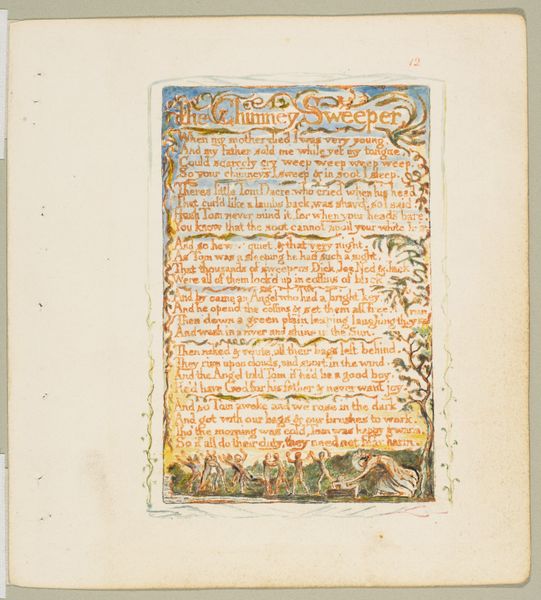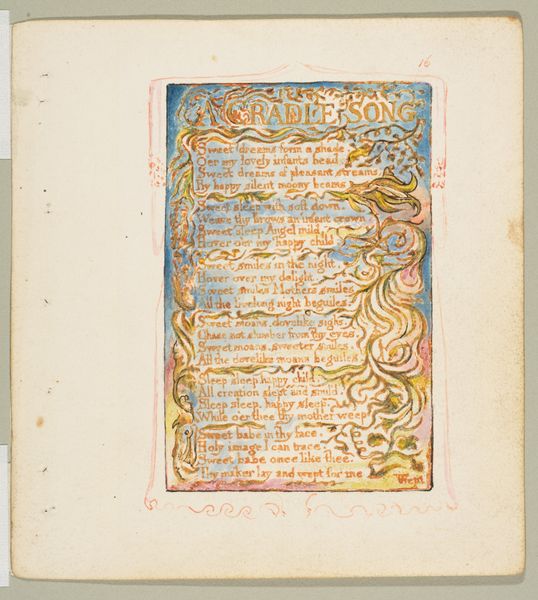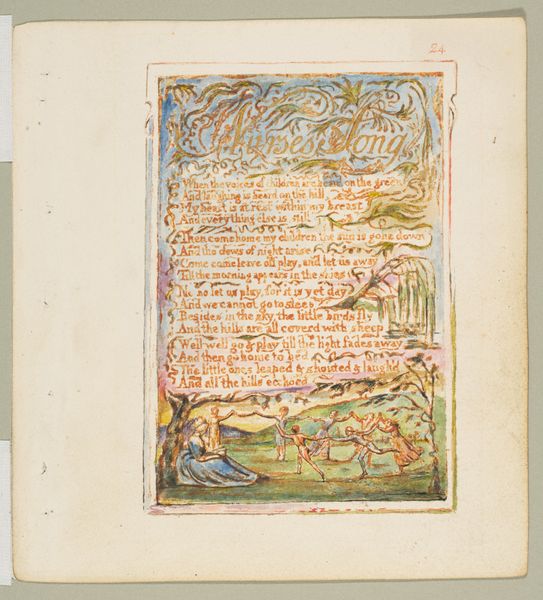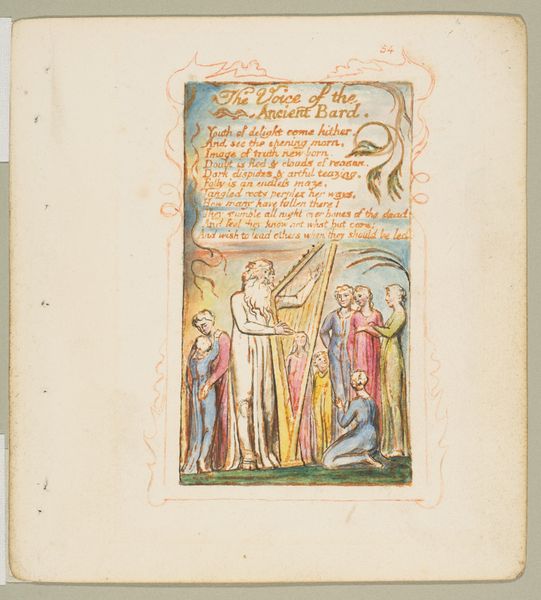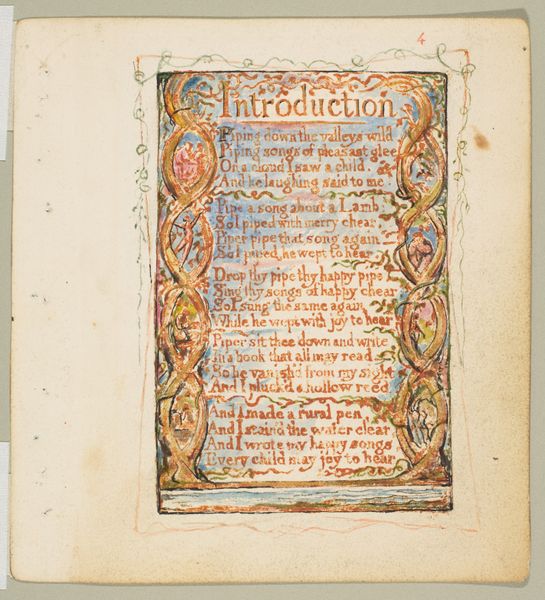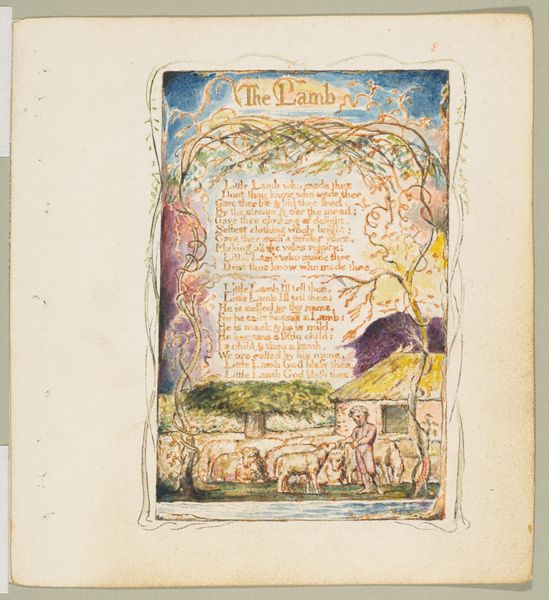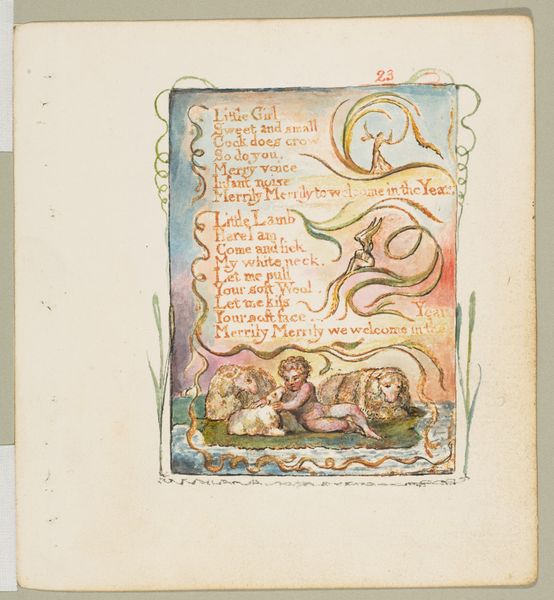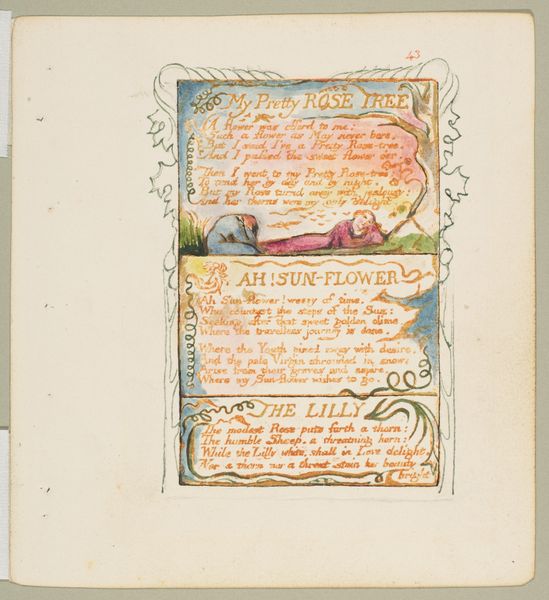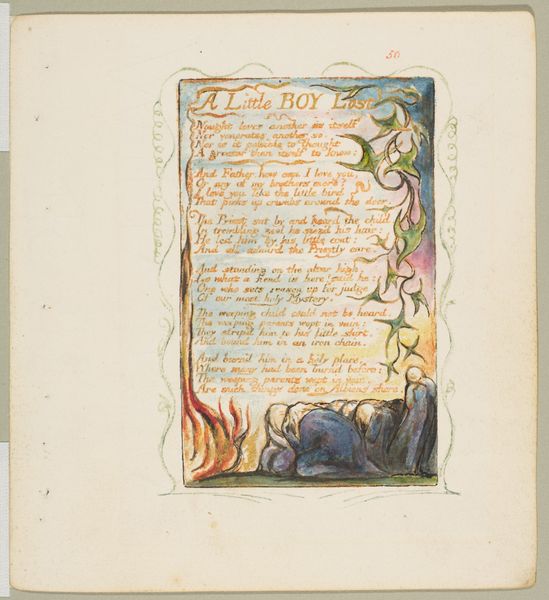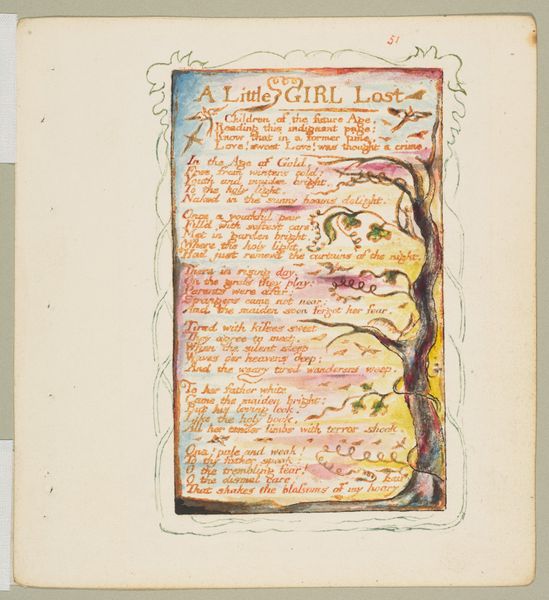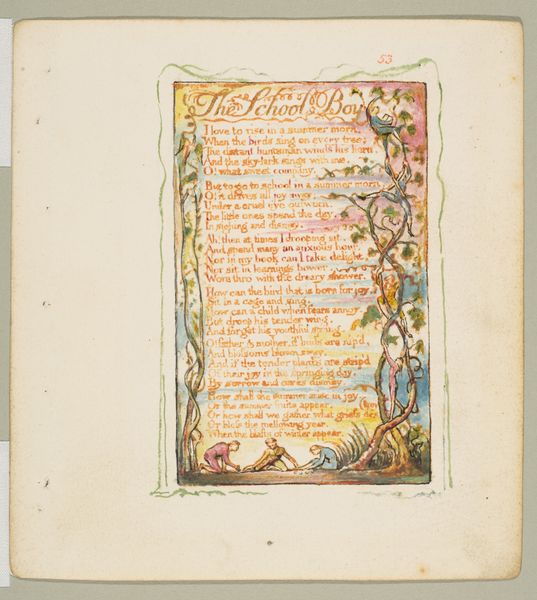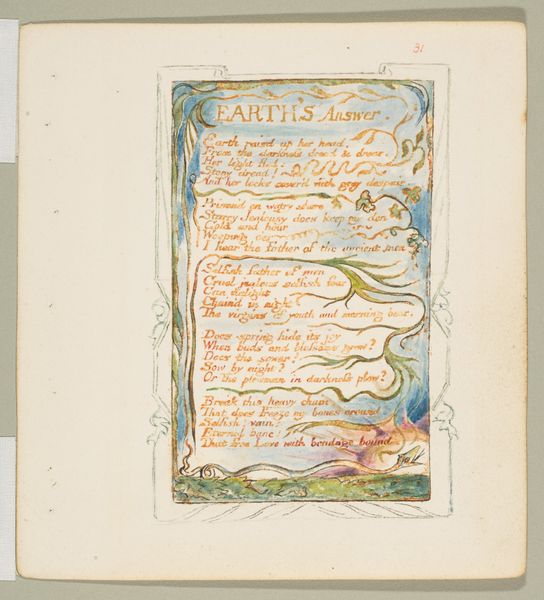
drawing, coloured-pencil, painting, print, watercolor
#
drawing
#
coloured-pencil
#
water colours
#
painting
# print
#
figuration
#
watercolor
#
coloured pencil
#
romanticism
#
history-painting
Dimensions: sheet: 6 3/16 x 5 9/16 in. (15.7 x 14.1 cm)
Copyright: Public Domain
Curator: This delicate illuminated print is entitled "Holy Thursday" and it comes to us from William Blake, circa 1789 to 1825. Editor: It’s immediately striking, isn't it? Like a page lifted straight from a storybook, with those rows of figures bookending a block of densely inscribed text. The palette is wonderfully muted; the entire composition feels self-contained and intimate. Curator: Indeed. Blake employed watercolor and colored pencil on this work, combining image and text, as he so often did, to create a unified artistic statement. Observe the upper register depicting lines of children and elders proceeding, mirroring the arrangement found on the bottom portion of the piece. Editor: Those figures read like friezes atop ancient temples, adding a layer of solemnity. Blake was deeply interested in societal structures. Is there a comment here on institutionalised charity and its impact on children? Curator: Precisely. "Holy Thursday" appeared in his "Songs of Innocence," and then later, "Songs of Innocence and Experience." Contextually, we must recall that these children were likely charity children, paraded through London on this holy day. Blake often explored the contrast between innocence and the harsh realities of societal exploitation. Editor: The composition echoes that tension. The lyrical beauty of the illuminated lettering contrasts with the underlying message of the poem. Blake is suggesting there is beauty amidst that suffering, perhaps even transcendence. Curator: He also critiques the power structures at play. He invites viewers to consider how innocence can be manipulated for political gain. This work serves as a poignant example of how Blake weaves socio-political commentary into seemingly innocent imagery. Editor: This deep dive has really revealed the artwork's contrasting layers for me. What initially felt decorative now feels incredibly profound. Curator: For me too, revisiting "Holy Thursday" offers fresh insights into the lasting relevance of Blake’s visionary work and its subtle yet insistent socio-political critique.
Comments
No comments
Be the first to comment and join the conversation on the ultimate creative platform.
